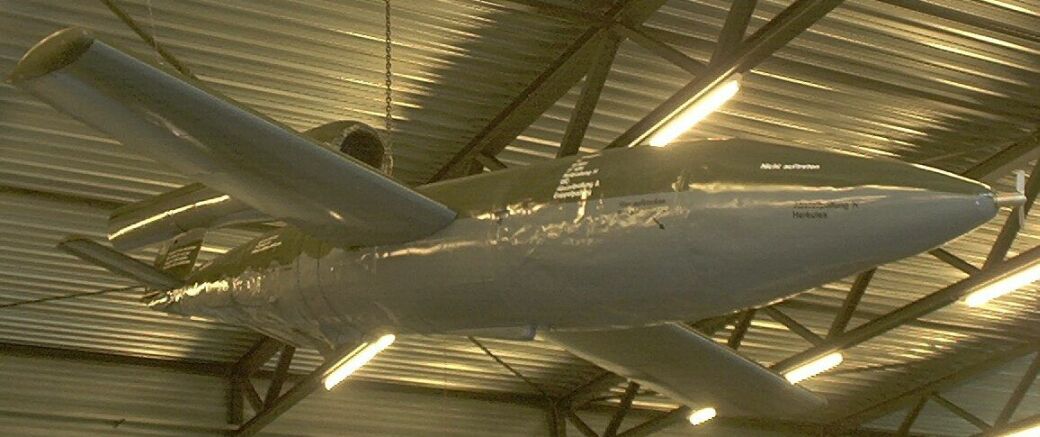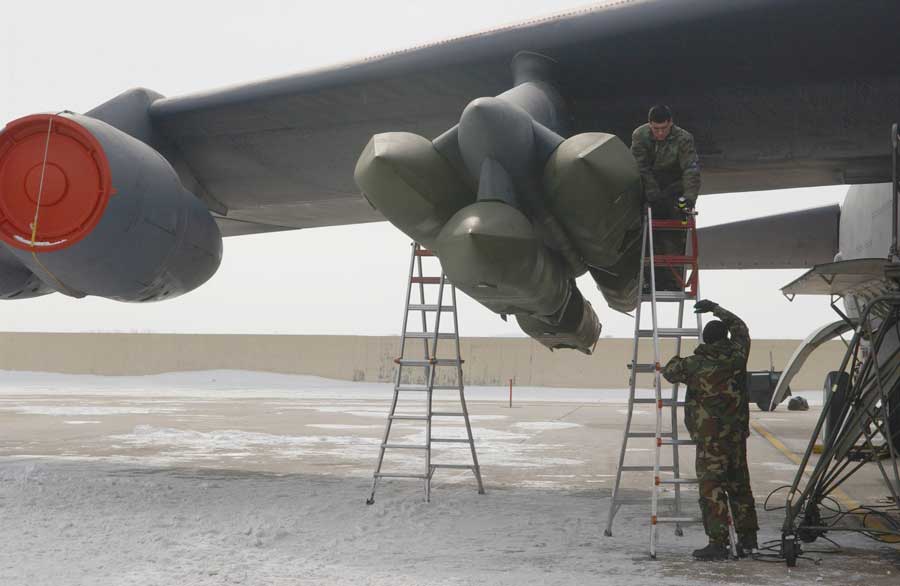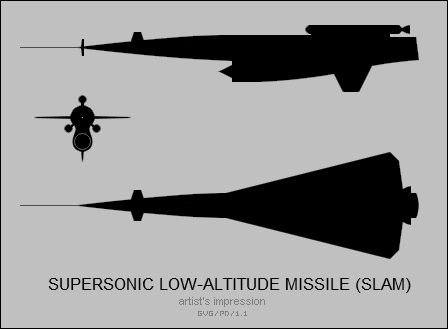|
TERCOM
Terrain contour matching, or TERCOM, is a navigation system used primarily by cruise missiles. It uses a Contour line, contour map of the terrain that is compared with measurements made during flight by an on-board radar altimeter. A TERCOM system considerably increases the accuracy of a missile compared with inertial navigation systems (INS). The increased accuracy allows a TERCOM-equipped missile to fly closer to obstacles and at generally lower altitudes, making it harder to detect by ground radar. Description Optical contour matching The Goodyear Aerospace, Goodyear Aircraft Corporation ATRAN (''Automatic Terrain Recognition And Navigation'') system for the MGM-13 Mace was the earliest known TERCOM system. In August 1952, Air Materiel Command initiated the mating of the Goodyear ATRAN with the MGM-1 Matador. This mating resulted in a production contract in June 1954. ATRAN was difficult to jam and was not range-limited by line-of sight, but its range was restricted by the ... [...More Info...] [...Related Items...] OR: [Wikipedia] [Google] [Baidu] |
BGM-109 Tomahawk
The BGM-109 Tomahawk () Land Attack Missile (TLAM) is an American long-range, all-weather, jet-powered, Subsonic flight, subsonic cruise missile that is primarily used by the United States Navy and Royal Navy in ship and submarine-based land-attack operations. Developed at the Applied Physics Laboratory of Johns Hopkins University under James H. Walker near Laurel, Maryland, the Tomahawk emerged in the 1970s as a modular cruise missile first manufactured by General Dynamics. The Tomahawk aimed to fulfill the need for a medium- to long-range, low-altitude missile with diverse capabilities. Its modular design allows for compatibility with a range of warheads, including high-explosive, submunitions, and bunker-busters. The Tomahawk can use a variety of guidance systems, including Global Positioning System, GPS, Inertial navigation system, inertial navigation, and TERCOM, terrain contour matching. Over a dozen variants and upgraded versions have been developed since the original desi ... [...More Info...] [...Related Items...] OR: [Wikipedia] [Google] [Baidu] |
AGM-86
The AGM-86 ALCM is an American subsonic air-launched cruise missile (ALCM) built by Boeing and operated by the United States Air Force. This missile was developed to increase the effectiveness and survivability of the Boeing B-52G and B-52H Stratofortress strategic bombers, allowing the aircraft to deliver its payload from a great distance. The missile dilutes an enemy's forces ability to respond and complicates air defense of its territory. The concept started as a long-range drone aircraft that would act as a decoy, distracting Soviet air defenses from the bombers. As new lightweight nuclear weapons emerged in the 1960s, the design was modified with the intent of attacking missile and radar sites at the end of its flight. Further development extended its range so much that it emerged as a weapon allowing the B-52s to launch their attacks while still well outside Soviet airspace, saturating their defenses with hundreds of tiny, low-flying targets that were extremely difficult ... [...More Info...] [...Related Items...] OR: [Wikipedia] [Google] [Baidu] |
Cruise Missile
A cruise missile is an unmanned self-propelled guided missile that sustains flight through aerodynamic lift for most of its flight path. Cruise missiles are designed to deliver a large payload over long distances with high precision. Modern cruise missiles are capable of traveling at high Aerodynamics#Incompressible aerodynamics, subsonic, Supersonic speed, supersonic, or Hypersonic speed, hypersonic speeds, are self-navigating, and are able to fly on a non-Ballistics, ballistic, extremely low-altitude trajectory. History The idea of an "aerial torpedo" was shown in the British 1909 film ''The Airship Destroyer'' in which flying torpedoes controlled wirelessly are used to bring down airships bombing London. In 1916, the Americans, American Aircraft pilot, aviator Lawrence Sperry built and patented an "aerial torpedo", the Hewitt-Sperry Automatic Airplane, a small biplane carrying a TNT charge, a Sperry autopilot and barometric altitude control. Inspired by the experiments, the ... [...More Info...] [...Related Items...] OR: [Wikipedia] [Google] [Baidu] |
AGM-129 ACM
The AGM-129 ACM (Advanced Cruise Missile) was a low-observable, subsonic, turbofan-powered, air-launched cruise missile originally designed and built by General Dynamics and eventually acquired by Raytheon Missile Systems. Prior to its withdrawal from service in 2012, the AGM-129A was carried exclusively by the US Air Force's B-52H Stratofortress bombers. Early development In 1982 the US Air Force began studies for a new cruise missile with low-observable characteristics after it became clear that the AGM-86B cruise missile would have difficulty penetrating future air defense systems. The AGM-86B relied on low-altitude flight to penetrate the Soviet air defense system centered on surface to air missiles. The deployment of the airborne early warning systems, together with the Zaslon PESA radar on MiG-31 and Myech radar on Su-27 interceptors, all three " look-down/shoot-down" radars, reduced the likelihood that the low-altitude AGM-86B would reach its target. The soluti ... [...More Info...] [...Related Items...] OR: [Wikipedia] [Google] [Baidu] |
Supersonic Low Altitude Missile
The Supersonic Low Altitude Missile or SLAM was a U.S. Air Force nuclear weapons project conceived around 1955, and cancelled in 1964. SLAMs were conceived of as unmanned nuclear-powered ramjets capable of delivering thermonuclear warheads deep into enemy territory. The development of ICBMs in the 1950s rendered the concept of SLAMs obsolete. Advances in defensive ground radar also made the stratagem of low-altitude evasion ineffective. Although it never proceeded beyond the initial design and testing phase before being declared obsolete, the design contained several radical innovations as a nuclear delivery system. Conceived role The SLAM was designed to complement the doctrine of mutually assured destruction and as a possible replacement for, or augment to, the Strategic Air Command system. In the event of nuclear war it was intended to fly below the cover of enemy radar at supersonic speeds and deliver thermonuclear warheads to roughly 16 targets. Innovations The use of ... [...More Info...] [...Related Items...] OR: [Wikipedia] [Google] [Baidu] |
MGM-13 Mace
The Martin Mace was a ground-launched cruise missile developed from the earlier Martin TM-61 Matador. It used a new self-contained navigation system that eliminated the need to get updates from ground-based radio stations, and thereby allowed it to fly further beyond the front lines. To take advantage of this longer practical range, Mace was larger than Matador and could travel a longer total distance. The original A model used a ground-mapping radar system which required the missile to fly at low to medium altitudes. In 1959 a new inertial navigation system was introduced that offered similar accuracy but had no altitude limitation. By flying at higher altitudes the missile's range almost doubled with no other changes. This led to the B model of 1961, which was limited to fixed launching sites, unlike the A model's mobile trailers. Mace was replaced by the MGM-31 Pershing missile by then Secretary of Defence Robert McNamara, and later in its role as a cruise missile for West ... [...More Info...] [...Related Items...] OR: [Wikipedia] [Google] [Baidu] |
Kh-55
The Kh-55 (, also known as RKV-500; NATO reporting name: AS-15 "Kent") is a Soviet/Russian subsonic air-launched cruise missile, designed by MKB Raduga in the 1970s. It has a range of up to and can carry nuclear warheads. Kh-55 is launched exclusively from bomber aircraft and has spawned a number of conventionally armed variants mainly for tactical use, such as the Kh-65SE and Kh-SD, but only the Kh-555 appears to have been put into service. The Kh-55 was not the basis of the submarine and ground-launched S-10 Granat or RK-55 ''Relief'' (SS-N-21"Sampson" and SSC-X-4"Slingshot") designed by NPO Novator. The RK-55 is very similar to the air-launched Kh-55 (AS-15 "Kent") but the Kh-55 has a drop-down turbofan engine and was designed by MKB Raduga. Development In the late 1960s, the "Ekho" study conducted by the GosNIIAS institute concluded that it would be more effective to deploy many small, subsonic cruise missiles than the much more expensive supersonic missiles then in favo ... [...More Info...] [...Related Items...] OR: [Wikipedia] [Google] [Baidu] |
Digital Elevation Map
A digital elevation model (DEM) or digital surface model (DSM) is a 3D computer graphics representation of elevation data to represent terrain or overlaying objects, commonly of a planet, moon, or asteroid. A "global DEM" refers to a discrete global grid. DEMs are used often in geographic information systems (GIS), and are the most common basis for digitally produced relief maps. A digital terrain model (DTM) represents specifically the ground surface while DEM and DSM may represent tree top canopy or building roofs. While a DSM may be useful for landscape modeling, city modeling and visualization applications, a DTM is often required for flood or drainage modeling, land-use studies, geological applications, and other applications, and in planetary science. Terminology There is no universal usage of the terms ''digital elevation model'' (DEM), ''digital terrain model'' (DTM) and ''digital surface model'' (DSM) in scientific literature. In most cases the term ''digital ... [...More Info...] [...Related Items...] OR: [Wikipedia] [Google] [Baidu] |
Contour Line
A contour line (also isoline, isopleth, isoquant or isarithm) of a Function of several real variables, function of two variables is a curve along which the function has a constant value, so that the curve joins points of equal value. It is a cross-section (geometry)#Definition, plane section of the graph of a function of two variables, three-dimensional graph of the function f(x,y) parallel to the (x,y)-plane. More generally, a contour line for a function of two variables is a curve connecting points where the function has the same particular value. In cartography, a contour line (often just called a "contour") joins points of equal elevation (height) above a given level, such as mean sea level. A contour map is a map illustrated with contour lines, for example a topographic map, which thus shows valleys and hills, and the steepness or gentleness of slopes. The contour interval of a contour map is the difference in elevation between successive contour lines. The gradient of t ... [...More Info...] [...Related Items...] OR: [Wikipedia] [Google] [Baidu] |
C-602
The YJ-62 () is a Chinese subsonic land-attack and anti-ship cruise missile. It is manufactured by the China Aerospace Science and Industry Corporation Third Academy. Description In a September 2014 article published in Joint Forces Quarterly, the YJ-62 is credited with a warhead, a speed of , and a sea-skimming terminal attack height of ; The missile has an inertial guidance system using GPS and BeiDou data, and an active terminal sensor. A 2017 China Maritime Studies Institute (CSMI) report credits the active radar seeker with an acquisition range of . In 2015, the United States Navy's Office of Naval Intelligence considered the YJ-62 to have longer range than the of the C-602 export version, Figures of at least 400 km have been given. The 2017 CSMI report notes that such long range suggests that the missile receives targeting from other platforms. YJ-62A is credited with a range of up to . C-602 The C-602 is the export version of the YJ-62, claimed to have a ran ... [...More Info...] [...Related Items...] OR: [Wikipedia] [Google] [Baidu] |
Mainframe Computer
A mainframe computer, informally called a mainframe or big iron, is a computer used primarily by large organizations for critical applications like bulk data processing for tasks such as censuses, industry and consumer statistics, enterprise resource planning, and large-scale transaction processing. A mainframe computer is large but not as large as a supercomputer and has more processing power than some other classes of computers, such as minicomputers, server (computing), servers, workstations, and personal computers. Most large-scale computer-system architectures were established in the 1960s, but they continue to evolve. Mainframe computers are often used as servers. The term ''mainframe'' was derived from the large cabinet, called a ''main frame'', that housed the central processing unit and main computer memory, memory of early computers. Later, the term ''mainframe'' was used to distinguish high-end commercial computers from less powerful machines. Design Modern mainfr ... [...More Info...] [...Related Items...] OR: [Wikipedia] [Google] [Baidu] |
Satellite Positioning System
A satellite navigation or satnav system is a system that uses satellites to provide autonomous geopositioning. A satellite navigation system with global coverage is termed global navigation satellite system (GNSS). , four global systems are operational: the United States's Global Positioning System (GPS), Russia's Global Navigation Satellite System (GLONASS), China's BeiDou Navigation Satellite System (BDS), and the European Union's Galileo. Two regional systems are operational: India's NavIC and Japan's QZSS. ''Satellite-based augmentation systems'' (SBAS), designed to enhance the accuracy of GNSS, include Japan's Quasi-Zenith Satellite System (QZSS), India's GAGAN and the European EGNOS, all of them based on GPS. Previous iterations of the BeiDou navigation system and the present Indian Regional Navigation Satellite System (IRNSS), operationally known as NavIC, are examples of stand-alone operating regional navigation satellite systems (RNSS). Satellite navigation devices d ... [...More Info...] [...Related Items...] OR: [Wikipedia] [Google] [Baidu] |









